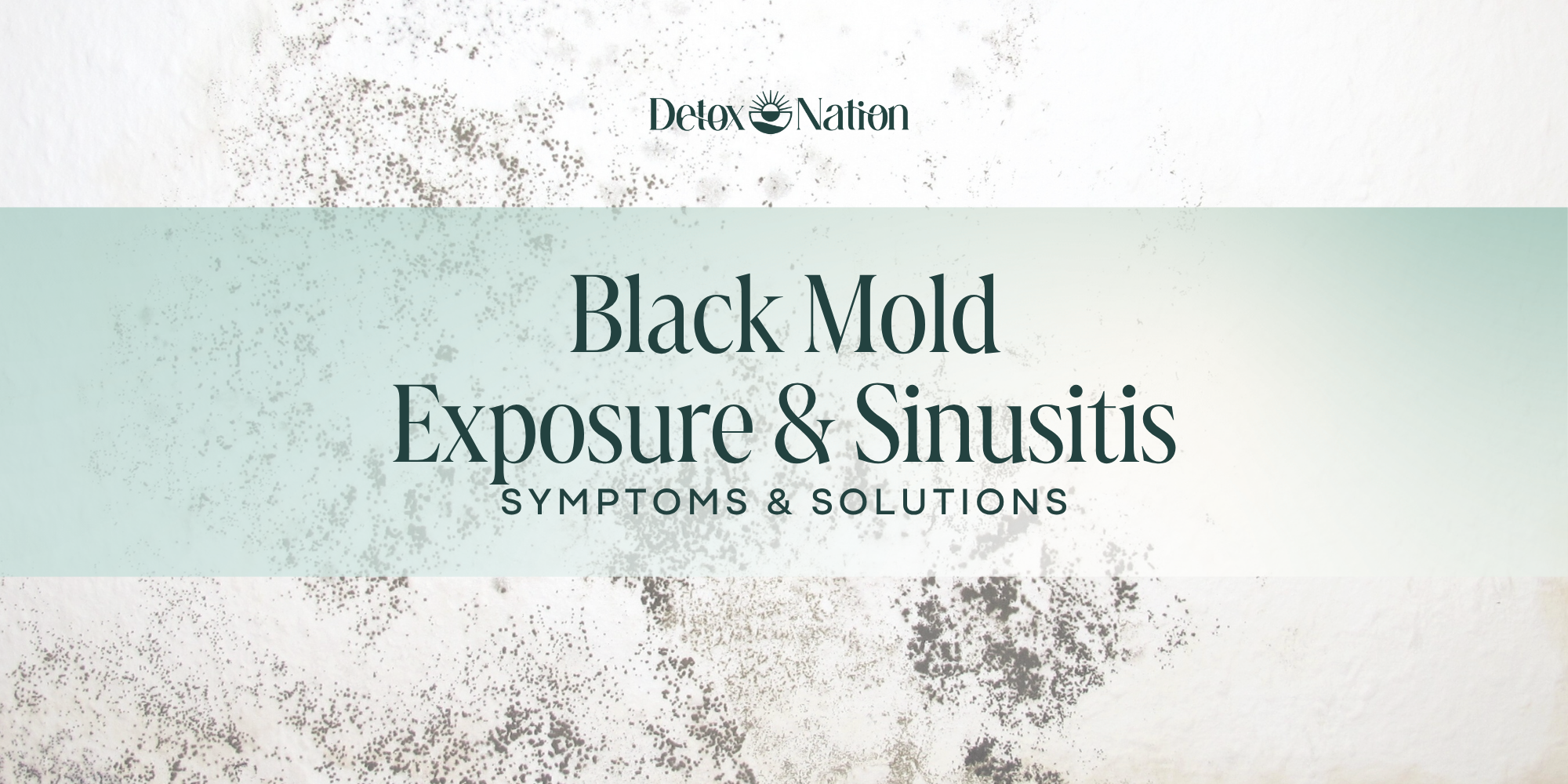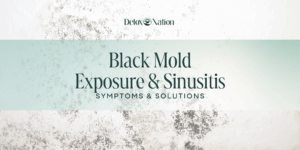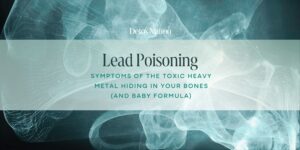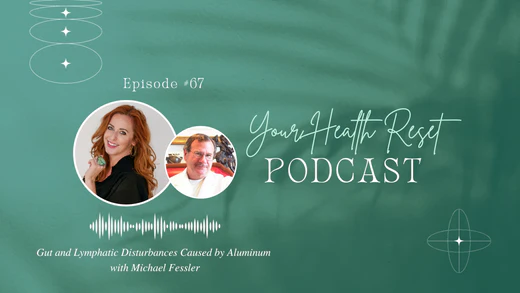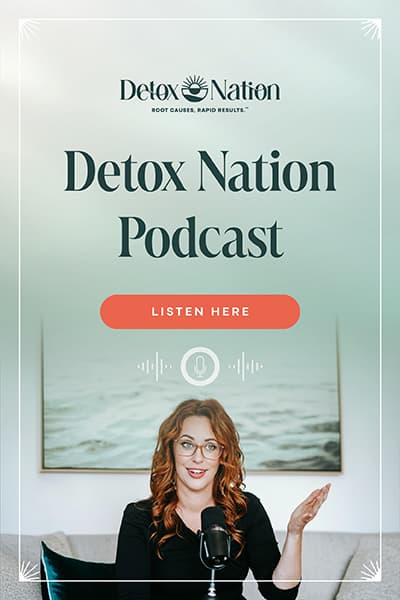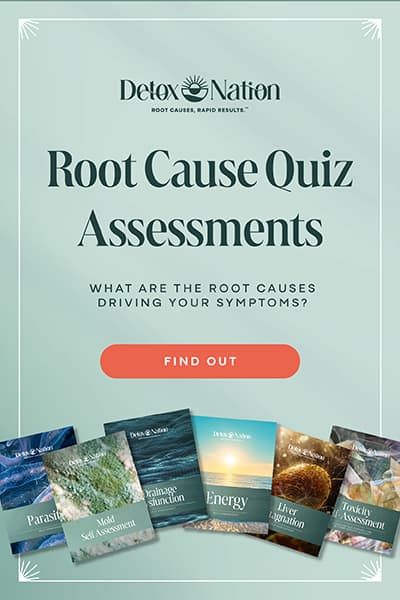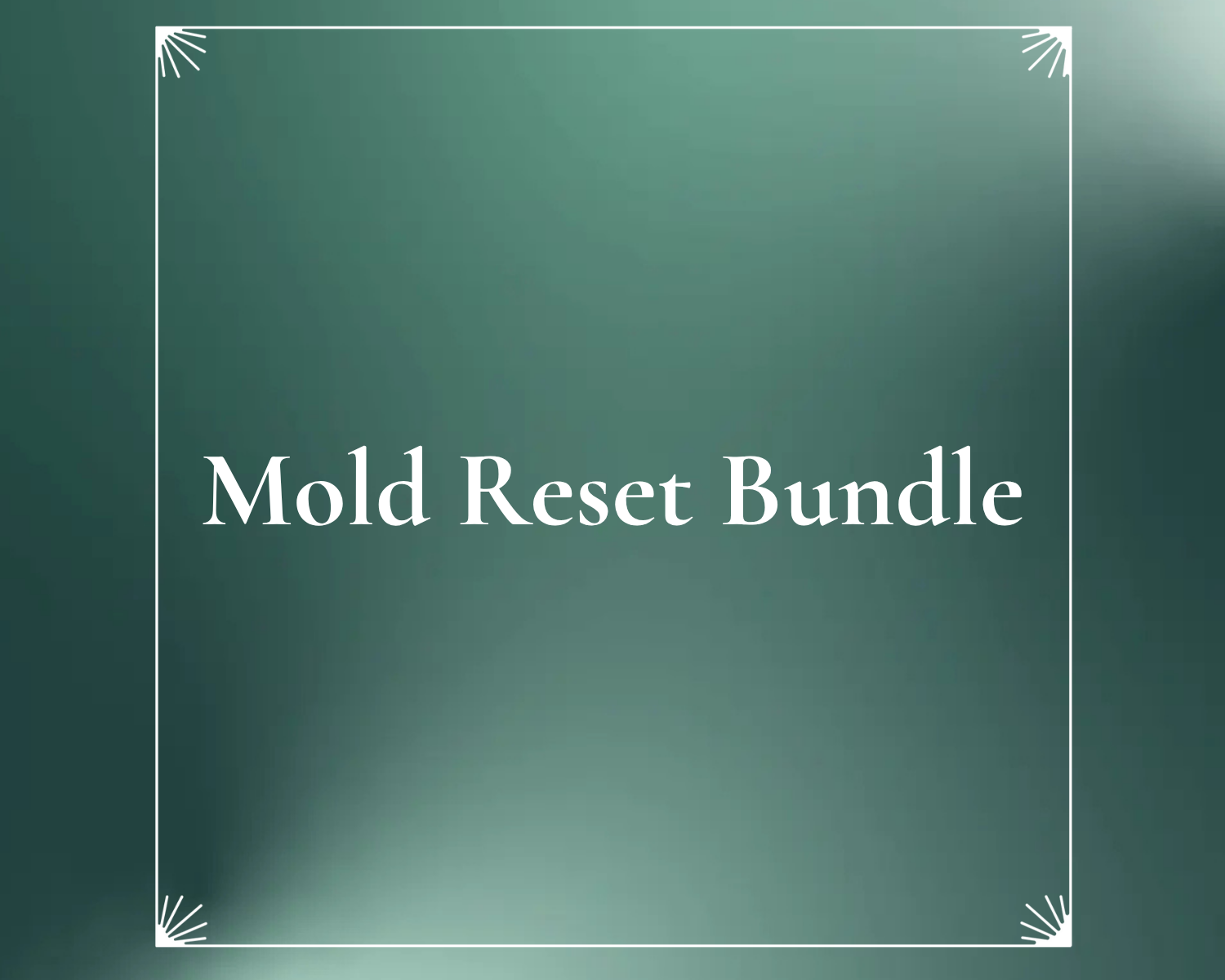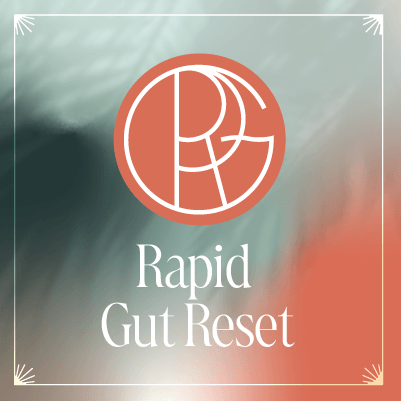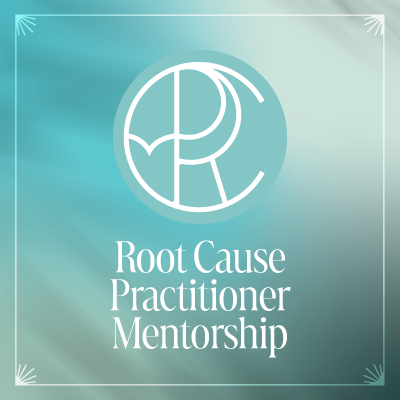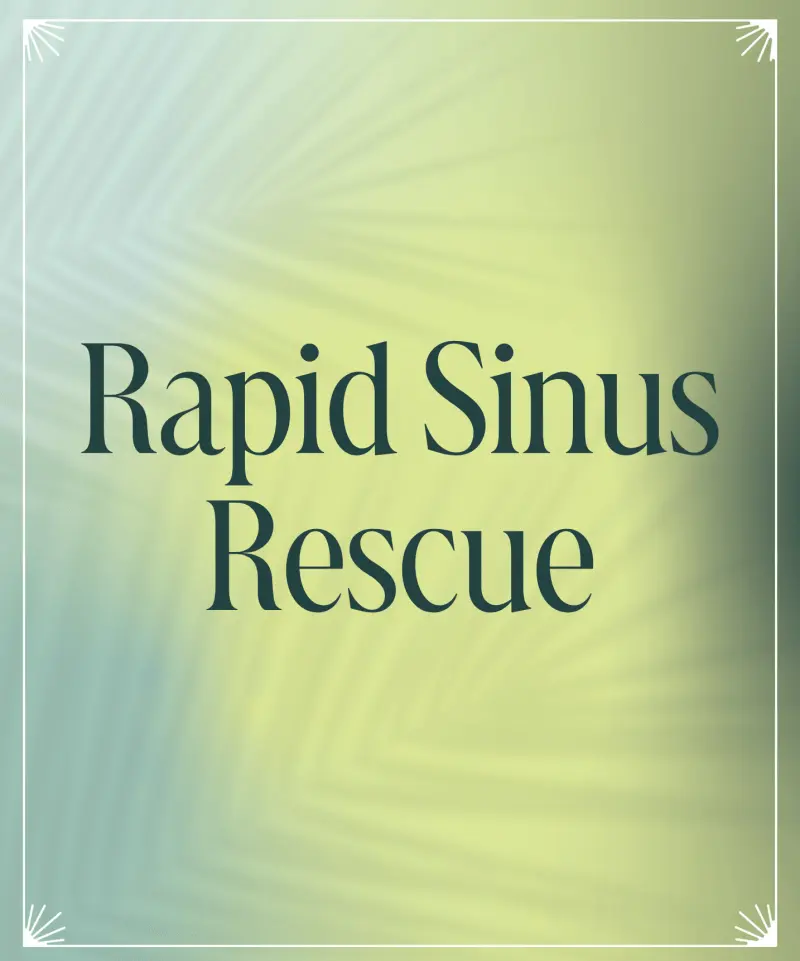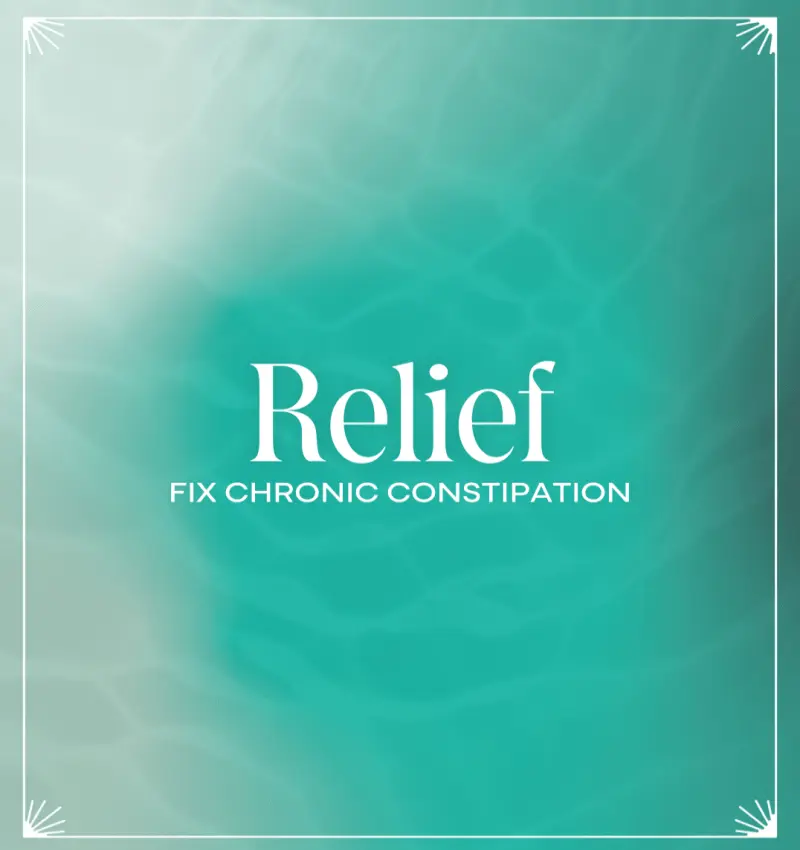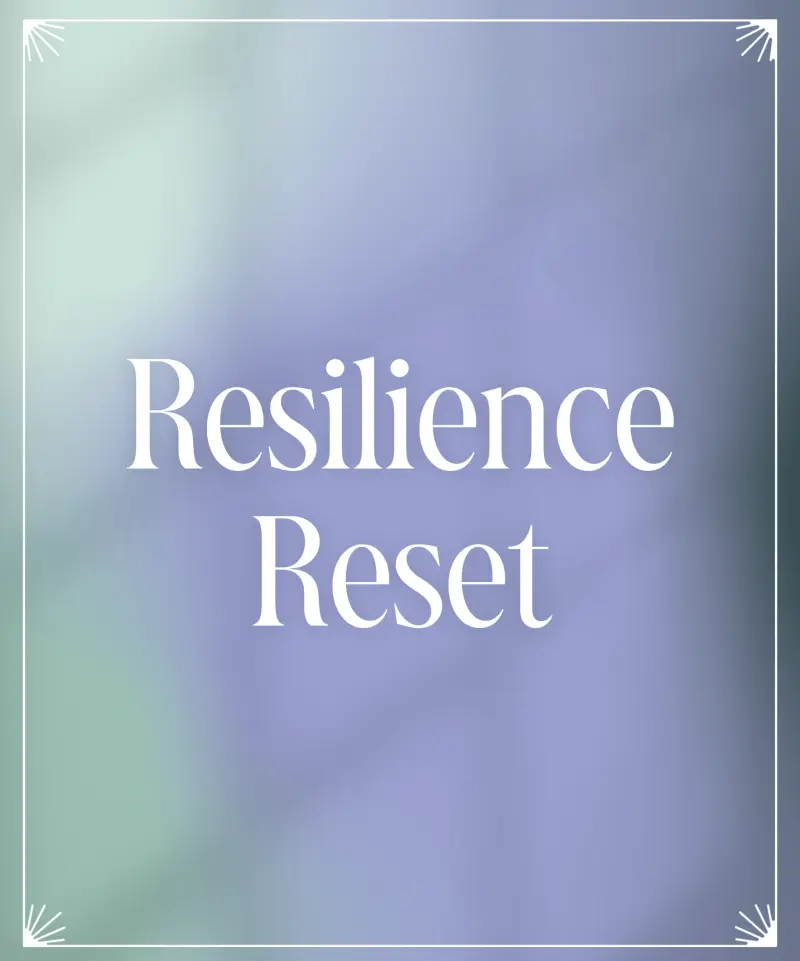Your head feels heavy.
There’s a dull, constant pressure in your sinuses.
And let’s not even talk about the morning sludge you blow into tissues.
Maybe you’ve been told it’s “just allergies” or “seasonal sinusitis.” Maybe you’ve had rounds of antibiotics, steroids, or even sinus surgery, only to end up right back where you started.
If you’ve ever walked into a room and felt your face swell up, or caught a whiff of that musty, earthy smell that makes your whole body tense, this article is for you.
Because sinus issues that won’t quit are not random. They’re not just “your genetics.”
They could be mold. Specifically, black mold, and the toxic little tricks it plays on your sinuses, your immune system, and your sanity.
Let’s break it down so you can start breathing—and thinking—clearly again.
Key Takeaways
- If your sinus symptoms won’t quit, don’t blame “seasonal allergies.”
- Black mold like Stachybotrys chartarum is chemically aggressive.
- Standard treatments often fall short, but you can detox and recover.
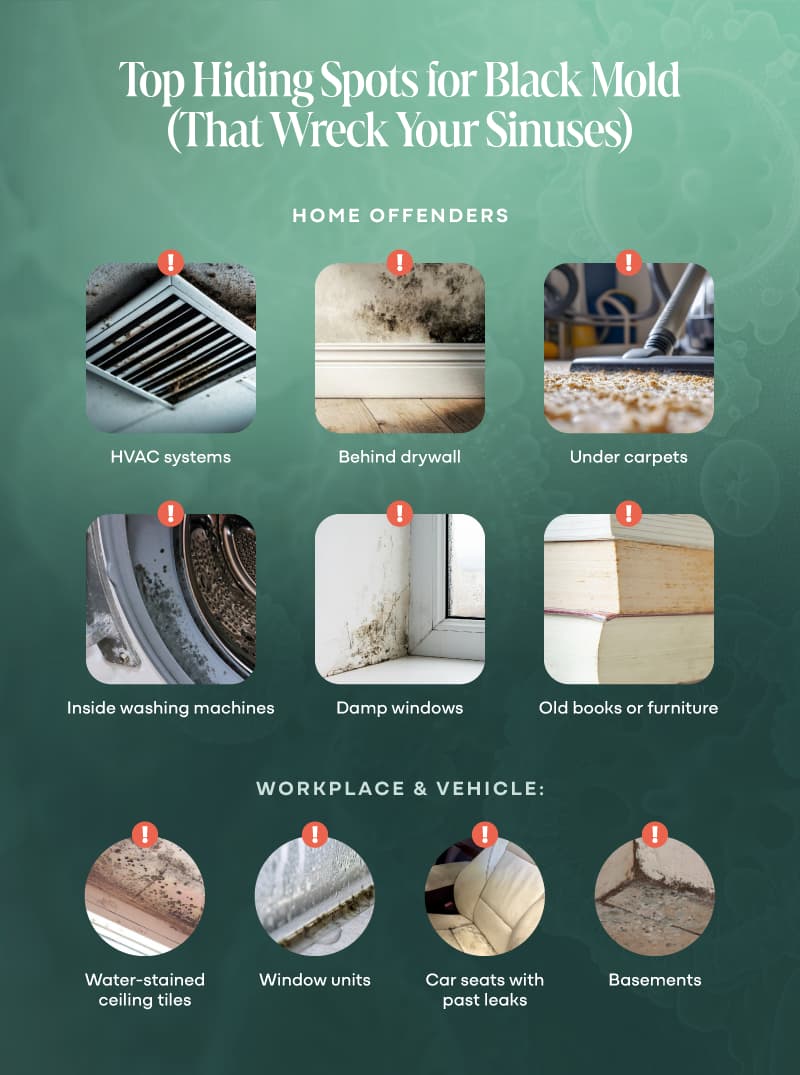
What Counts as “Black Mold”?
“Black mold” isn’t a scientific term; it’s a catchall label for a group of dark-pigmented molds that tend to show up after water damage and excessive humidity (1, 3, 13).
They’re often toxic, and they love to set up shop in your walls, carpets, ceilings, and your body.
The most infamous of the bunch is Stachybotrys chartarum, but it’s not the only culprit. Other dark molds that fall under this umbrella include:
- Cladosporium – Often found on damp wood and textiles.
- Alternaria – Common in bathrooms and window frames.
- Aspergillus niger – Loves dust, HVAC systems, and sneaky indoor corners.
- Chaetomium – Usually hangs out on drywall and wood.
- Ulocladium – Thrives anywhere water damage lingers.
Black mold can lurk behind walls, under floors, or in your air ducts (1, 3, 4, 16, 20).
It doesn’t always smell, it doesn’t always look scary, and you won’t always see it, but it can still produce toxins that drift through your air and land in your upper airways like microscopic poison darts (8, 9, 17, 19, 20).
Your house (or workplace, or car) can look clean, but still quietly gaslight your immune system through the vents.
If your sinus issues got worse after a roof leak, a basement flood, or a long stay in a “charming” Airbnb with questionable AC, you might be living with more than just dust.
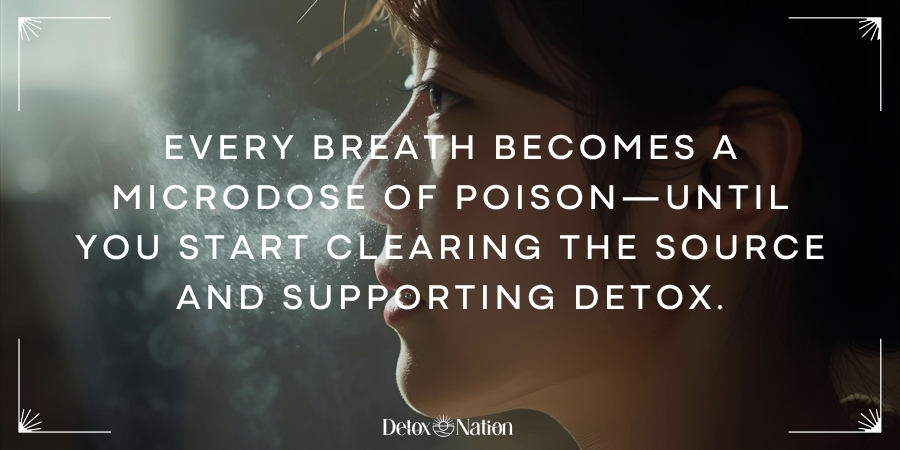
Meet Stachybotrys: The Slow-Growing Mold That Packs a Toxic Punch
Stachybotrys chartarum is the poster child of toxic mold. It’s the one that shows up in lawsuits, documentaries, and late-night Google rabbit holes.
But this mold’s PR is pretty accurate: it’s slow to grow, sneaky to detect, and ridiculously toxic.
Unlike molds that pop up on your shower curtain in a day, Stachybotrys needs consistent moisture to thrive (1, 3)—think roof leaks, damp drywall, hidden plumbing drips, or a post-flood renovation that never fully dried out (1, 3, 4, 5, 8, 9, 16, 19, 20).
You can even find it in culinary herbs (20) and foods (8, 9, 10).
It doesn’t love open air, which is why it sets up camp inside your walls, behind wallpaper, or underneath floorboards, where it can stew in peace.
Stachybotrys has been shown to inactivate competing fungal species on water-damaged building materials (6). This means it can dominate less-toxic competitors to become “king of the hill.”
Stachybotrys has two distinct chemical “personalities” depending on the strain:
- Trichothecene-producing types (the worst ones) release satratoxins, roridin, and verrucarins—potent mycotoxins that damage cells on contact (4, 5, 9, 13, 14, 16, 17, 20).
- Atranone-producing types produce different compounds that can still inflame your airways but aren’t as deeply researched (6).
How We Can Help
You’re not doomed to live on decongestants and false hope forever. Start with the Mold Toxicity Quiz to begin connecting your symptoms to what might be lurking in your environment.
Take the QuizUnlike molds that love to fly around, Stachybotrys spores are sticky and heavy (6).
They don’t go airborne easily, so air testing or cultures often miss them, especially if you’re not actively disturbing the colony (6).
Meanwhile, tiny fragments and mycotoxins do go airborne, and they can slip into your sinuses, lungs, and bloodstream without ever showing up on a mold test (2).
The number of fungal hyphae and fragments can be 500 times higher than the spore count, and the deposition of these fragments in your airways can be over 200 times higher than spore deposition (2).
Stachybotrys is slow and quiet, and incredibly destructive. Especially when your sinuses are already dealing with pollen, pollution, and an immune system that’s flat-out tired.
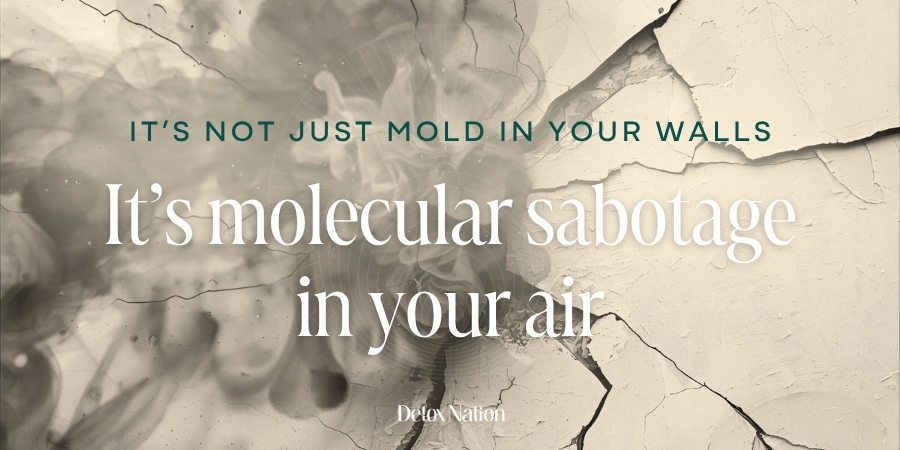
Stachybotrys Mycotoxins 101: Why Your Sinuses Can’t Catch a Break
Here’s where black mold stops being a building issue and starts being a biochemical nightmare, especially for your sinuses.
Because Stachybotrys isn’t just growing in the walls, it’s leaking molecular sabotage into your air.
The worst offenders are a group of compounds called trichothecenes, particularly satratoxins G and H. These aren’t your average irritants. These are protein synthesis inhibitors, which is a fancy way of saying they tell your cells to stop functioning normally (4, 14, 9, 16, 20).
Some quick facts that should make your eyebrows go up:
- Satratoxins are cytotoxic (they kill cells) (9, 12, 16, 20).
- Lipopolysaccharides (produced by gram-negative gut bacteria) increase the toxicity of roridin A and satratoxin G (19).
- The macrocyclic trichothecenes are a hundred times more potent than another researched mycotoxin, deoxynivalenol (4, 9).
- Furthermore, the trichothecenes can directly interact with cellular components without requiring metabolic activity first (14).
- Some scientists consider them to be more toxic than pesticides (8).
- They’re lipophilic, meaning they dissolve into fats and cross cell membranes, including those in your sinuses and brain.
- They’ve been shown in studies to cause nosebleeds, mucosal irritation, inflammation (4, 7, 9, 16), and immune suppression (12, 14), especially with chronic exposure through inhalation (8, 9, 17, 19, 20).
In animal studies, inhaled satratoxins from Stachybotrys caused massive inflammation in the nasal passages and destruction of the olfactory epithelium, tract, and bulbs (aka the part of your nose that helps you smell) in just a few days (4, 19).
Let that sink in: this stuff doesn’t need months to do damage. It just needs access.
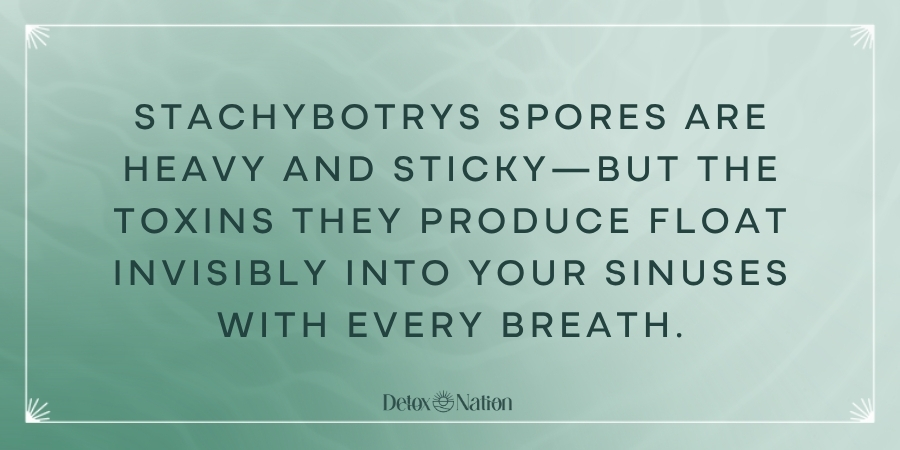
Since Stachybotrys spores are heavy, they don’t travel far on their own (6). But tiny, inhalable fragments coated in these mycotoxins absolutely do float—and they love to settle right in your upper airways (2).
The result is that your sinuses stay swollen, raw, and confused, your immune system gets the signal to “stand down” just when it needs to rally, and every breath becomes a microdose of poison.
But here’s the good news: Your body can get rid of these toxins—once you stop the exposure and support the right detox pathways. (We’ll get there soon.)
Let’s break down exactly how black mold impacts your sinuses.
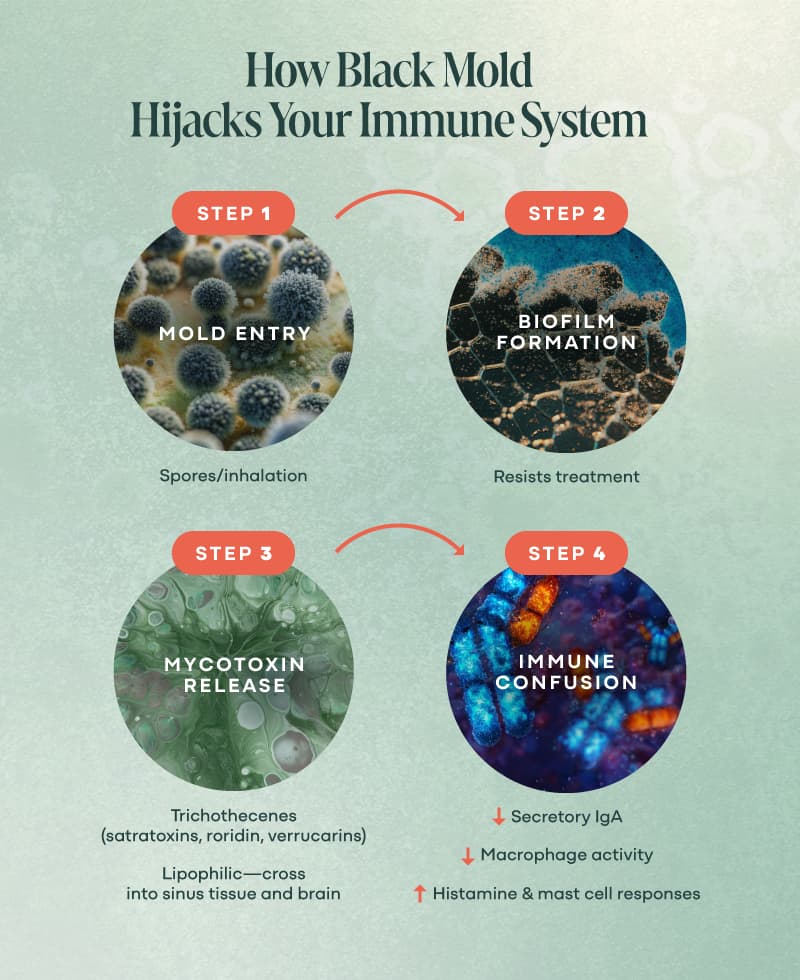
How Black Mold Disrupts Your Sinuses
Your sinuses are part of your immune system’s frontline defense.
Lined with mucosa, filled with immune cells, and designed to filter, drain, and defend, they’re usually pretty great at their job—unless they’re under constant attack from mold fragments, mycotoxins, and a confused immune system. Let’s look at how that plays out.
Mold Colonization & Biofilm
When you inhale mold spores, they land on your mucosal lining, and if your immune system is overwhelmed, they set up shop and build a biofilm.
A biofilm is a slimy, protective matrix that shields the mold spores from antifungals, antibiotics, and even immune cells. Inside, they can reproduce, release toxins, and invite other pathogens to join the party.
Immune Confusion & Suppression
Mycotoxins confuse your immune system.
Stachybotrys toxins suppress key players like macrophages and neutrophils—the very cells that are supposed to eat up invaders (12, 14). They also decrease secretory IgA, your first line of defense in the mucosa.
Now you’re inflamed and immunocompromised at the same time.
This causes your immune system to swing between overreacting (allergies, histamine surges, mast cell freakouts) and under-reacting (letting pathogens move in unchecked). Sound familiar?
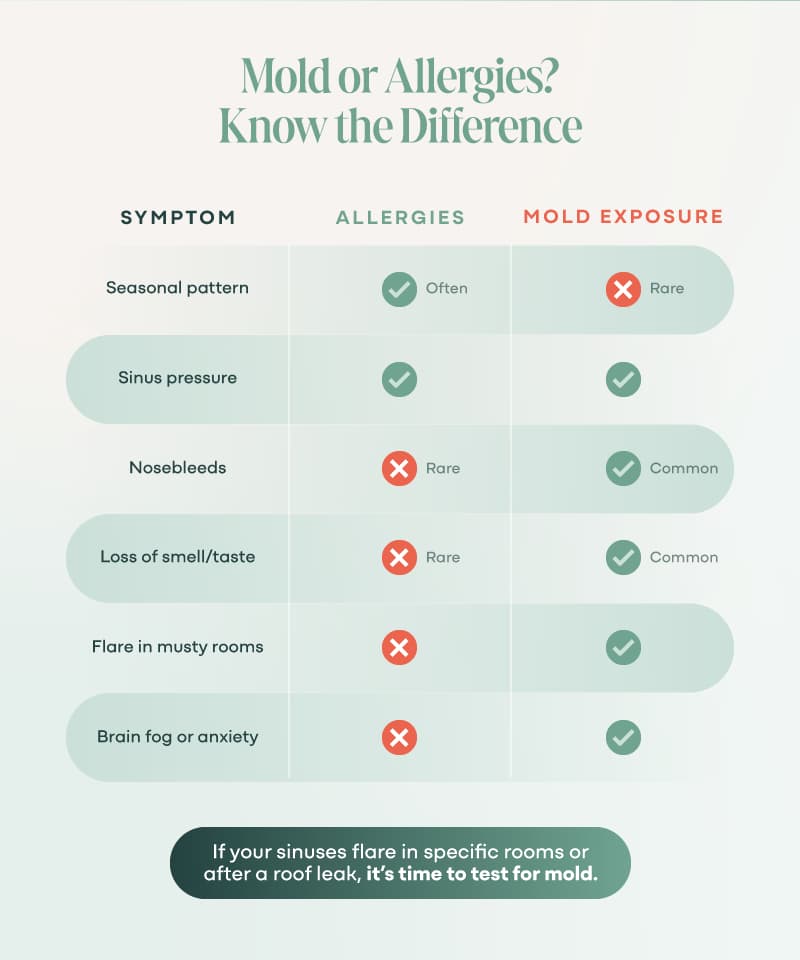
Inflammation & Drainage Dysfunction
When you’re inflamed, swollen tissue narrows your drainage pathways, cilia (tiny hair-like structures that move mucus along) slow down or stop, and mucus thickens. This creates a warm, moist environment where mold, bacteria, and viruses thrive.
If your body is a garden, this is where the weeds take over and the sprinkler breaks.
MARCoNS & Co-Infections: Mold’s Favorite Sidekicks
One of the most common findings in mold-exposed folks is MARCoNS—Multiple Antibiotic-Resistant Coagulase-Negative Staph (21, 22).
These bacteria can live in mold-induced biofilms and are notoriously hard to eradicate.
They release their own biotoxins, worsening inflammation and suppressing the immune response even more.
Systemic Ripple Effects: It Doesn’t Stay in Your Nose
Once inhaled, mycotoxins can enter your bloodstream, triggering systemic issues:
- Chronic cough (5, 16)
- Drippy nose (5, 16)
- Constant low-grade headache (5, 16)
- Increased asthma symptoms (16)
- Sinusitis (18)
- Brain fog and memory loss (5)
- Eye irritation, including itching, stinging, redness, etc. (5)
- Mood swings and anxiety (5)
- Gut dysfunction as well as nausea and vomiting (5)
- Fatigue so deep it feels cellular (5)
In other words, the mold in your sinuses might be the missing link behind your “mystery symptoms.”
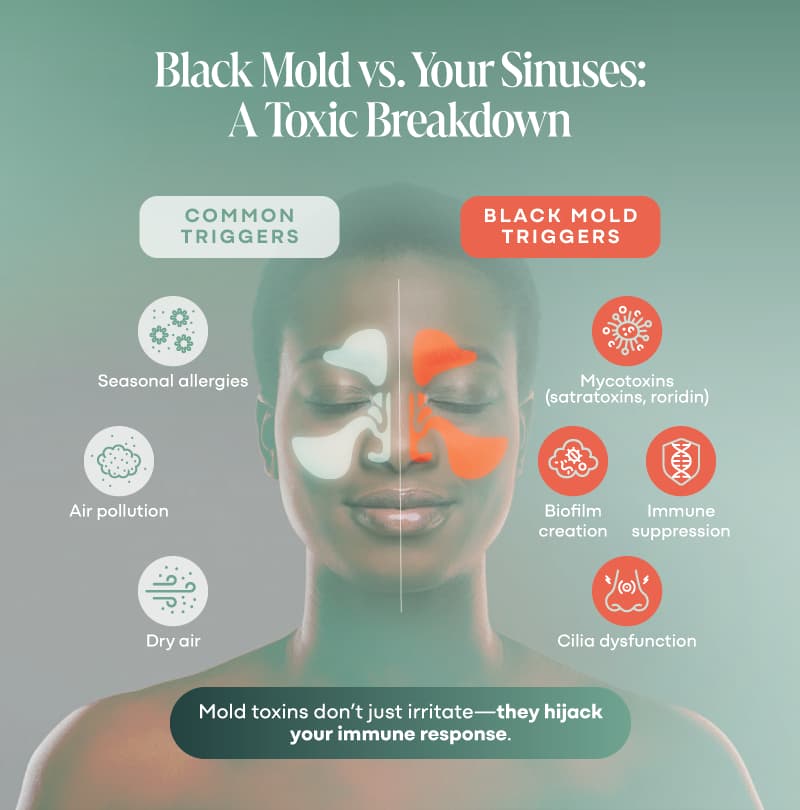
Symptoms of Black Mold Sinus Involvement
Sinus mold creeps in slowly. Quietly. Confusingly. Until one day you realize that the “seasonal allergies” you’ve had for 18 months are starting to feel more like a full-time job.
Here’s what to watch for if mold has taken up residence in your sinuses:
Sinus-Specific Symptoms
These show up in your face and head first:
- Chronic nasal congestion, even without a cold or pollen in sight
- Postnasal drip that’s thick, sticky, or has a weird metallic smell
- Pressure or pain around your eyes, cheekbones, or forehead that won’t quit
- Frequent sinus infections or sinus pain without infection
- Nosebleeds, especially in dry environments or older buildings
- Loss of smell or taste—sometimes suddenly, sometimes gradually
- Sneezing “fits” or marathons
Symptoms That Flare in Specific Environments
Mold-exposed sinuses often “react” to contaminated spaces before your brain even registers it:
- You walk into an older home, and your nose swells shut within minutes
- You sleep somewhere new and wake up with a sinus migraine
- You feel sinus pressure or head fuzziness in basements, libraries, water-damaged gyms, etc.
If your face knows a room is moldy before your eyes do—that’s a clue.
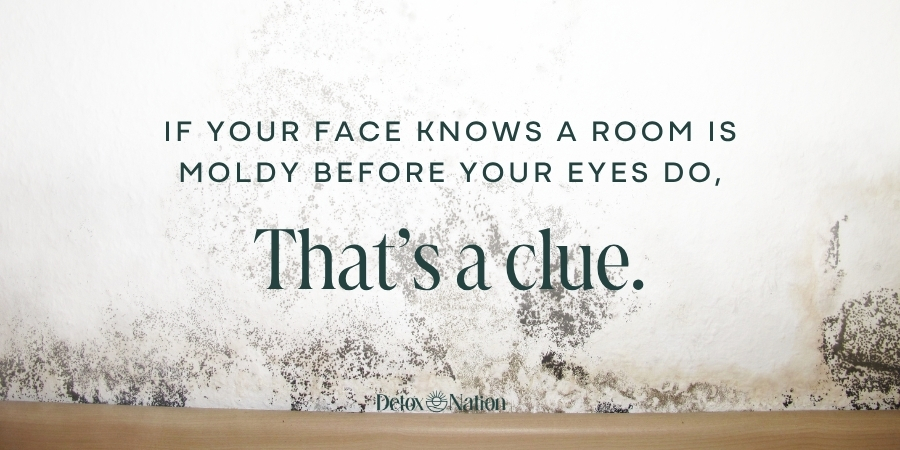
Systemic Clues
Once mold is in your sinuses, its toxins don’t just stay there:
- Crushing fatigue, especially after sleeping in a known moldy space (5, 14)
- Neurotoxicity as evidenced by brain fog, memory hiccups, word recall issues (4, 5, 12, 14)
- Heightened sensitivity to smells, lights, or foods
- Histamine overload (sneezing, itching, flushing for “no reason”)
- A constant low-grade anxiety or irritability that feels physiological (5)
If you’re seeing multiple symptoms on this list—and especially if they’ve worsened after water damage or moving into a new space—it’s time to start asking different questions.
Because if mold is hiding in your sinuses, no amount of allergy meds or antibiotics is going to fix it.
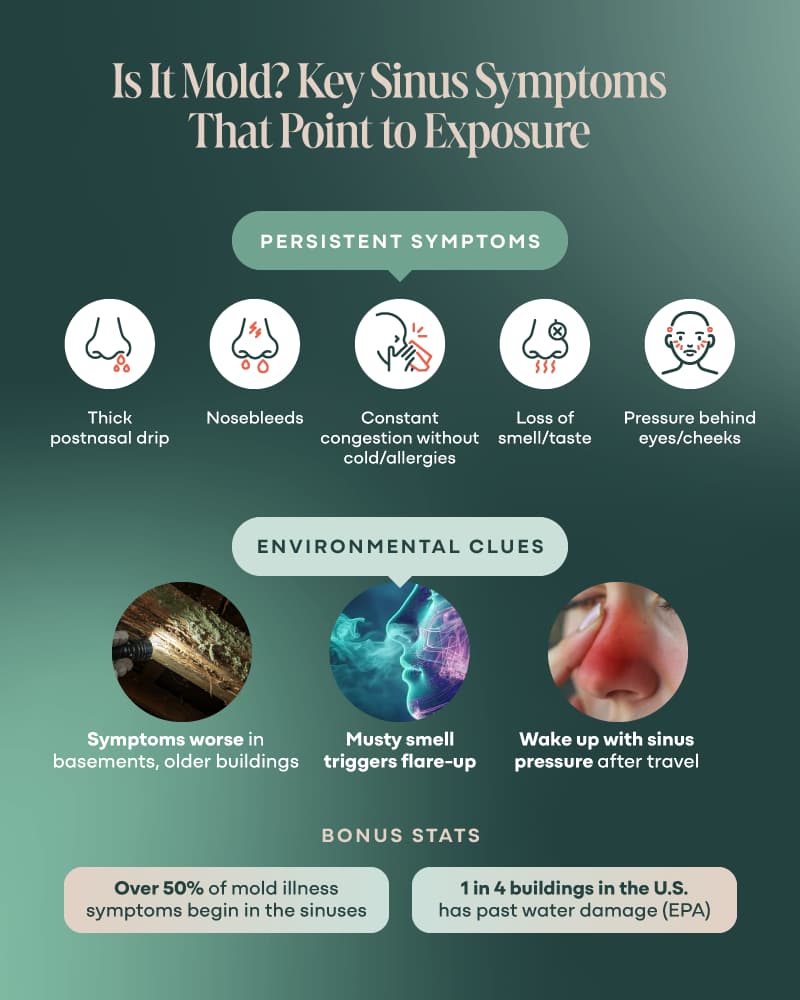
Why the Standard ENT Playbook Falls Short
You finally go to the ENT.
They peer up your nose, prescribe a round of antibiotics, maybe hand you a steroid spray, and tell you to irrigate with saline.
If you’re lucky, they’ll mention something about chronic rhinosinusitis.
Then, nothing changes. Or worse, it flares back up the moment you stop the meds.
You’re not imagining it.
The conventional sinus treatment model wasn’t built to recognize mold as a root cause.
And it wasn’t built to handle chronic colonization or mycotoxin exposure.
Here’s why it usually fails:
- Antibiotics miss the real target. Bacterial infections are often secondary. Mold and its biofilm fortress are the real instigators, but antibiotics don’t touch fungal invaders or break up biofilms.
- Steroids reduce inflammation but suppress immunity. Corticosteroid sprays or oral prednisone can make you feel better for a few days, but they come at a cost. They weaken your mucosal immunity even further, allowing mold and bacteria to burrow in deeper. Temporary relief, long-term setback.
- Surgery without detox creates a revolving door. Sinus surgery can widen drainage pathways, but if mold colonization and mycotoxins aren’t addressed systemically, many patients report a return of symptoms within months. That shiny post-op CT scan means nothing if your sinuses are still swimming in toxins.
Most doctors aren’t trained to recognize mold as a possible cause, so it’s important to ask questions and look deeper when standard treatments don’t help.
If you’ve been seeing ENTs without relief, your sinuses may be reacting to an underlying issue that needs to be addressed at the root, not just managed at the surface.
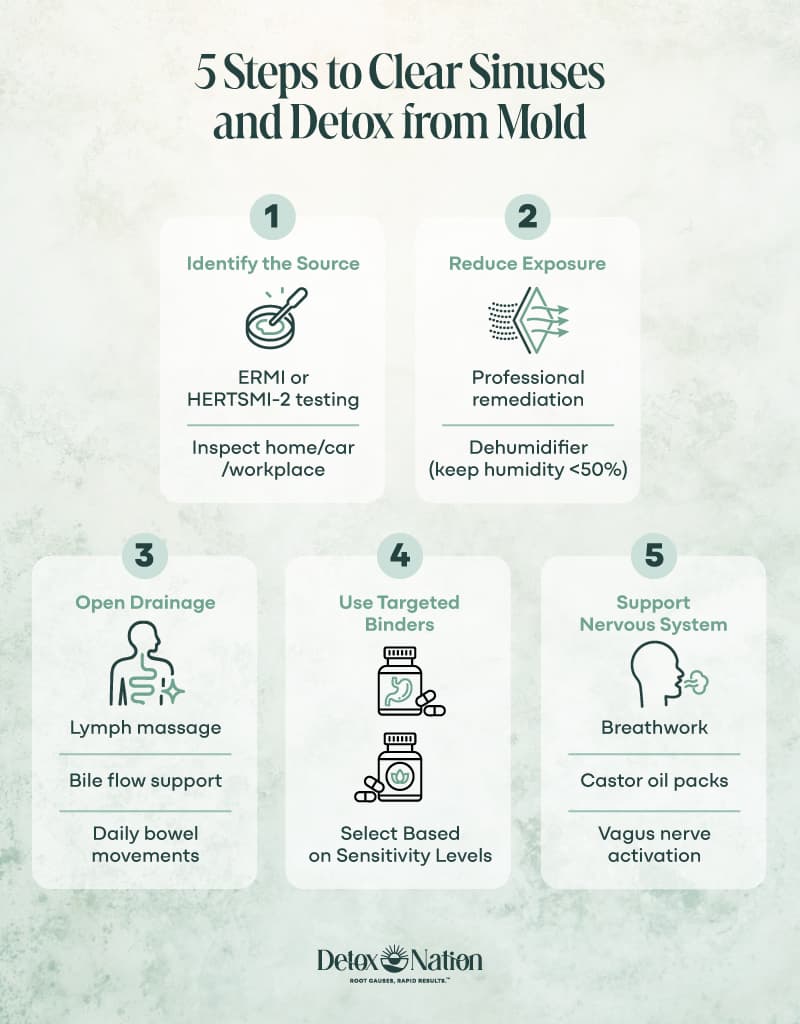
Detoxing Your Way to Clear Sinuses
Let’s be clear: you can’t out-supplement or out-spray your way past mold if you’re still living in it or ignoring your drainage.
But the good news is your body wants to heal. It just needs you to get the obstacles out of the way.
Here’s how to do that without creating a detox reaction that makes you want to throw your neti pot out the window.
Evict the Source
If you’re still living or working in mold exposure, start here:
- Get an ERMI or HERTSMI-2 test from a mold-literate inspector (DIY petri dish kits won’t cut it).
- Use a quality dehumidifier—mold loves humidity over 50%.
- Remediate professionally, not with bleach or air fresheners (those make it worse).
Pro tip: If remediation isn’t possible right away, start with binders and drainage anyway—you’ll still get symptom relief while you plan your exit strategy.
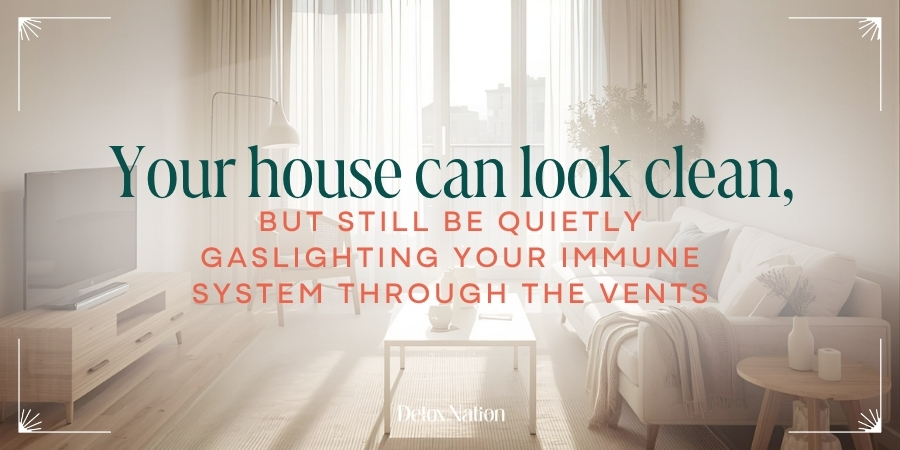
Open the Drainage Pathways
This part is skipped by almost everyone and it’s why so many detoxes fail.
Your sinuses drain into your gut, lymph, and liver.
If those aren’t flowing, mycotoxins recirculate, and you feel worse.
Start with:
- Gentle lymph movers (such as lymphatic self-massage like “The Big 6,” or castor oil packs)
- Bowel regularity (daily movements are non-negotiable)
- Bitters and bile support (artichoke, dandelion, or targeted supplements)
- Nervous system regulation—because if you’re stuck in fight-or-flight, detox stalls.
Bind and Eliminate Mycotoxins
Binders act like a cleanup crew, grabbing toxins and escorting them out through bile and stool.
Effective options (depending on the specific mycotoxins):
- Activated charcoal
- Bentonite clay
- Chlorella
- Specific targeted binders
Important: these don’t “kill mold”—they bind toxins. And they only work if drainage is open.
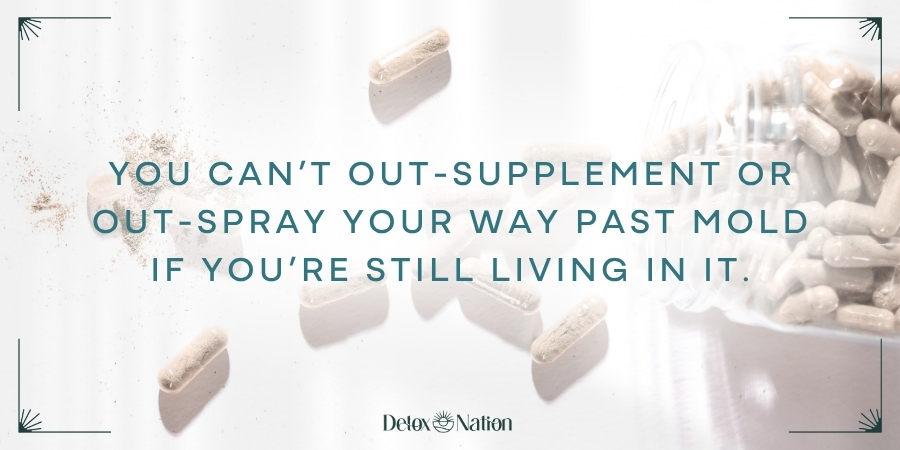
Target the Sinuses Directly
Now we deal with the sinus terrain.
Top options:
- Navage rinses with distilled water and salt (never tap water, please)
- Antimicrobial nasal sprays with essential oils or colloidal silver
- Saline sinus rinses with microdoses of the right binders for mold
Clearing mucus helps break down biofilms and restore healthy sinus function.
Regulate Your Nervous System
If your vagus nerve is still in panic mode, your immune system stays confused.
Simple ways to shift into healing:
- Cold exposure (even 30 seconds in the shower)
- Humming or singing
- Gentle breathwork (inhale 4, exhale 6)
- Safe, slow movement like walking or lymphatic rebounding
No parasympathetic state means no deep healing. Period.
Track and Adjust
Healing from mold happens in stages. Your body works through different layers over time.
Tools you can use to track:
- Symptom logs (daily or weekly)
- Visual Contrast Sensitivity (VCS) test for neurotoxic load
- Mycotoxin labs—if you’ve already opened drainage and want deeper insights
The goal isn’t perfection—it’s steady progress and balance.
Each time your body releases toxins or breathing starts to feel easier, it’s showing you that healing is happening.
You Deserve to Breathe Freely Again
Black mold and its mycotoxins are sneaky, but they’re not invincible. With the right information, support, and a nervous system that’s finally out of crisis mode, your body can clear the mess. Your sinuses can heal. Your brain can come back online. And yes—you can get your energy, focus, and breath back. Take the free Mold Toxicity Quiz to find out if mold is part of your root-cause puzzle.
Take the QuizFAQs
1. How do I know if mold is causing my sinus issues?
If symptoms flare in certain buildings, linger despite meds, or come with brain fog, fatigue, or weird mucus, mold is worth investigating.
2. Can mold actually live in my sinuses?
Yes. Mold can colonize your sinuses, build biofilms, and release toxins that keep your immune system in chaos.
3. Why didn’t my air quality test show black mold?
Stachybotrys spores are heavy and sticky. Standard air tests often miss them. ERMI or HERTSMI-2 testing is more reliable.
4. I already took antibiotics. Why am I still congested?
Antibiotics don’t kill mold or break down biofilms. And mold often invites antibiotic-resistant bacteria to the party.
5. Does mold affect more than just my nose?
Absolutely. Mycotoxins from mold can impact your brain, gut, hormones, and nervous system—far beyond your sinuses.
6. Will detox make me feel worse?
Only if you skip steps. Detoxing without drainage = recirculation = “detox reactions.” Always open your pathways first.
7. What if I can’t move or remediate right now?
Start with gentle binders, nervous system support, and opening drainage. You can still make progress while planning next steps.
8. Is it really fixable?
Yes. Your body is brilliant and never forgets how to heal—once you stop the exposure and support the process properly.

